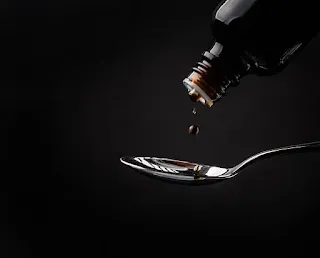Overview Of Pharmaceutical Syrup
Let's take a brief overview of pharmaceutical syrup. Pharmaceutical syrups are a concentrated aqueous solution of a sugar or sugar substitute mixed in water or other other aqueous liquid. They may be with or without flavouring agents. Pharmaceutical syrup are nearly saturated solutions of sugar in water in which medicinal substances or drugs are dissolved. They are oral dosage forms.
 |
| Pharmaceutical syrup |
Components Of Syrups
Most syrup contains the following components in addition to the purified water and any medicinal agents present:
Read Also: Classification Of Pharmaceutical Liquid Dosage Form
(a) The sugar, usually sucrose, or sugar substitute used to provide sweetness and viscosity up to 85% w/v (65% w/w)
(b) Antimicrobial preservatives
(c) Flavorants
(d) Colorants
(e) Viscosity modifier
Also, many types of syrups, especially those prepared commercially, contain special solvents (including alcohol), solubilizing agents, thickeners or stabilizers.
Types Of Sugar In Syrup
The sugar is added for sweetness and viscosity. There are many types of sugar available in the market. However, sucrose and dextrose are the choice for pharmaceutical syrup. The reason is that it is the best available commercial sugar with high purity, high degree of sweetness, lack of odour and ease of handling. Sucrose is obtained from sugar cones, sugar beet or less commonly sugar maple.
In some circumstances, sucrose can be replaced in whole or in part by other sugars or substances such as sorbitol, glycerin, and propylene glycol. Methylcellulose or hydroxyethylcellulose are another choice of sugar when the manufacturer wants to avoid glycogenetic substances. Glycogenetic substances are materials converted to glucose in the body like sucrose. Syrups made from methylcellulose or hydroxyethylcellulose are suitable for diabetic patients.
Read Also: Classification Of Pharmaceutical Suspension
These two materials are not hydrolyzed and absorbed into the blood stream, and their use results in an excellent syrup-like vehicle for medications intended for use by diabetic patients and others whose diet must be controlled and restricted to nonglycogenetic substances. The viscosity resulting from the use of these cellulose derivatives is much like that of sucrose syrup.
Stability Of Syrup
Syrups with above 85% sucrose do not need a preservative because of their inherent stability in contrast to the unstable character of dilute sucrose solutions. Concentrated sugar solutions are quite resistant to microbial growth because of the unavailability of the water required for the growth of microorganisms. The aqueous sugar medium of dilute sucrose solutions is an efficient nutrient medium for the growth of microorganisms, particularly yeasts and molds. Preservatives are added if the sucrose concentration is less than 85% or syrup is to be stored even if it is concentrated. When properly prepared and maintained, the syrup is inherently stable and resistant to the growth of microorganisms.
Preservatives Of Syrup
Preservatives used in syrup include benzoic acid, butyl paraben, sorbic acid, glycerin, alcohol, etc. Benzoates, butyl paraben and sorbic acid are most effective in acidic solution. They are effective as preservatives in alkaline solution mixtures of parabens and are frequently employed to take advantage of their potentiating effect.
Read Also: Overview Of Pharmaceutical Suspension
Alcohol is used in syrups to assist in dissolving the alcohol-soluble ingredients, but normally, it is not present in the final product in amounts that would be considered to be adequate for preservation (15% to 20%).
Incompatibilities Of Syrup
1. In a preparation containing high concentration of alcohol, sucrose will crystallize. Simple syrup can tolerate 10% alcohol without crystallization
2. When solutions containing pectin are mixed with sucrose syrup, gelation is observed since sucrose partially dehydrates pectin
3. When syrup dehydrates with aqueous solution, the necessity for additional preservatives should be considered
Refrigeration inhibits both mold growth and inversion and may be required for some syrup. It may cause crystallization of the sucrose. Large crystals which form are difficult to redissolve. The supernatant liquid may contain significantly lower concentration of sucrose.

Comments
Post a Comment
Please have your say